The Monastery of Sant Pere de Rodes is a Romanesque-style Benedictine monastery which overlooks the Costa Brava, one hundred and fifty kilometres north of Barcelona.
Legend has it that the monastery was built by monks who fled from Rome during the seventh century, taking with them the remains of Saint Peter. In reality, the first written record of a monastery on the site dates back to 878 AD, and most of what we see today was built during the tenth and eleventh centuries.
In addition to being one of the most emblematic religious buildings in Spain, the monastery’s mountainside location offers visitors exceptional views of the Costa Brava and beyond.
History of the Monastery of Sant Pere de Rodes
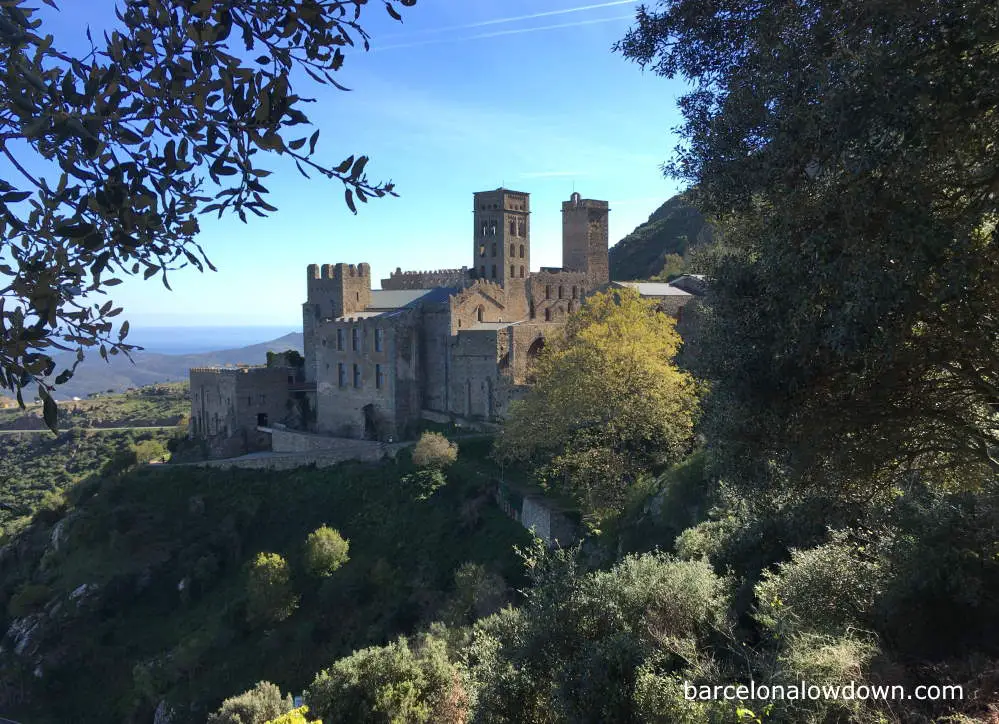
No one knows exactly when the Sant Pere de Rodes Monastery was built or by whom. This has given rise to several fanciful hypotheses.
One legend states that in 610 AD, fearing that Rome was about to fall to the “Barbarian hordes”, Pope Bonifacio IV gave a collection of religious artefacts, including the remains of Saint Peter, to a group of monks who then fled in a small boat across the Mediterranean Sea.
The monks finally made landfall in Spain, on the Costa Brava, where they initially hid the relics in a cave before building a monastery to house them.
Another story tells of a crew of Christian seafarers who got into difficulties during a storm and prayed to the Lord for salvation. When their ship finally came ashore near Cap de Creus, they built a monastery on the site as a sign of their gratitude.
The first written records of a monastery on the site date back to 878 AD.
Most of the buildings which you can visit today were built during the tenth and eleventh centuries and are Romanesque although several architectural features differentiate the monastery from other buildings of the era.
The collection of religious relics housed in the monastery meant that it soon became an important site for Christian pilgrims, firstly on their way to Rome and the Holy Land and later on their way to Santiago de Compostela.
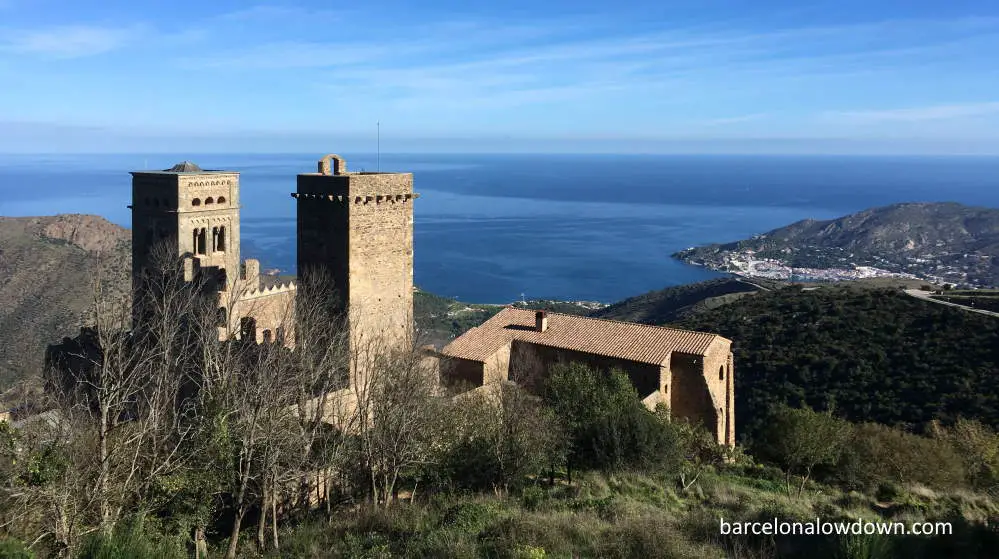
During the tenth century, Verdera Castle and other lands in the area were donated to the monastery by Gausfredo I, the Count of Ampuries and Rosellon.
The monastery’s heyday was during the eleventh and twelfth centuries when the original buildings were extended and reformed. In addition to the religious buildings, two villages were built to supply the monks and visiting pilgrims.
During the fourteenth and fifteenth centuries, the Black Death and an increase in piracy took their toll on the Costa Brava. Many coastal villages were abandoned, and the monastery went into decline.
During the eighteenth century, frequent attacks by bandits and repeated wars with France also took their toll. In 1708, during the War of the Spanish Succession, the Duke of Noailles famously stole the monastery’s bible, which is now in the Biblioteca Nacional de France in Paris.
In 1797, Sant Pere de Rodes was finally abandoned and, during the century which followed, was stripped of many of its original architectural features, some of which are now exhibited in museums in Barcelona.
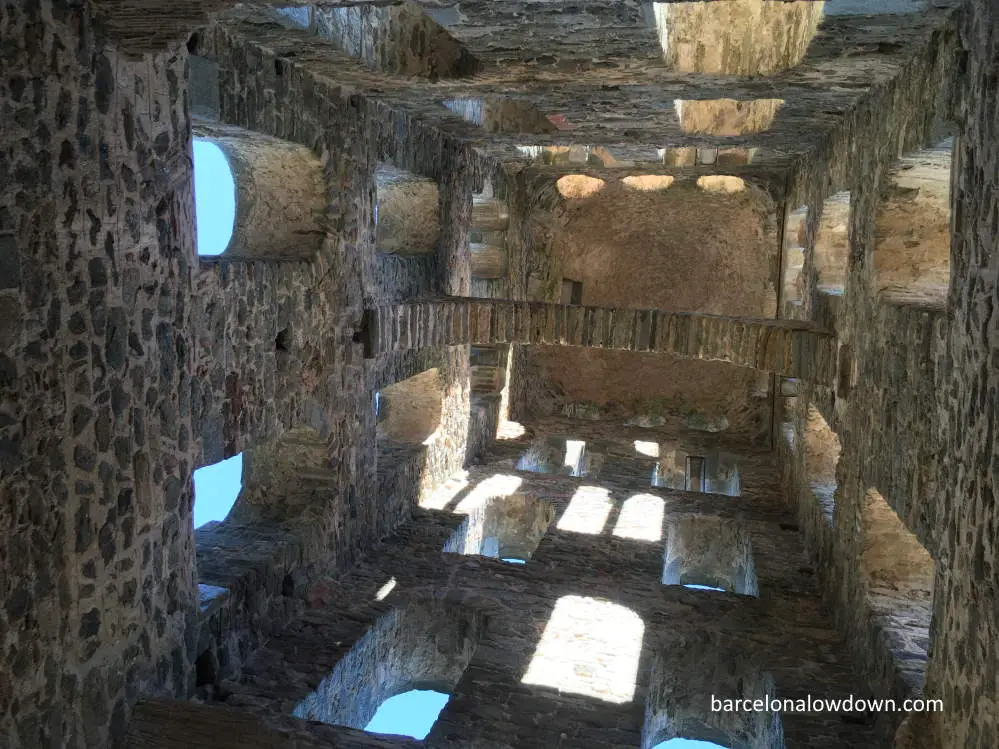
Restoration began in 1935 after a book was published describing the religious artefacts that had been discovered on the site. Further excavations and restoration work took place throughout the nineteen seventies, eighties and nineties.
Visiting Sant the Pere de Rodes Monastery
There are three options for visiting the monastery; self-guided, audio-guide and as part of an organized tour (only available during the summer). If you decide to go with the self-guided option, I recommend you download the PDF guide from the monastery’s website.
Opening times and tickets
The monastery opens daily from Tuesday to Sunday, including public holidays.
Opening times vary:
October to May: 10:00 to 17:30
June to September: 10:00 to 20:00
The last entry is thirty minutes before the museum closes.
Tickets are available online and at the entrance to the monastery, and you don’t usually need to book in advance.
Ticket prices:
Adults: €6
Reduced: €4
Children under 16 years: Free of charge
The monastery is also covered by the Catalonia Monuments Pass, which is valid for twelve months and includes a total of twenty-nine attractions.
Verdera Castle
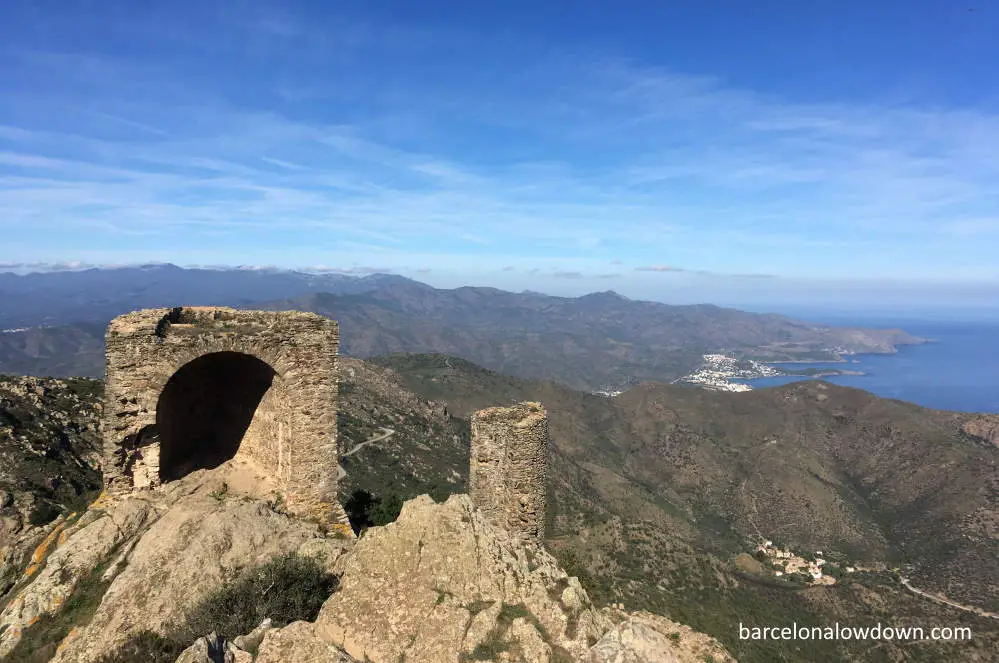
Verdera Castle was built during the ninth century AD on the summit of San Salvador Saverdera at an altitude of 670m. The castle was initially built by the Counts of Ampuries but was donated to the Monastery of Sant Pere de Rodes during the tenth century.
Today the castle stands in ruins, and the main reason to visit is to see the spectacular panoramic views. On a clear day, in addition to El Port de la Selva, you can see as far as Cap de Creus, The Bay of Roses and inland to the Pyrenees Mountain range.
The castle is only accessible on foot. The path is signposted, and it takes approximately twenty minutes to walk up from the monastery.
The ruined village of Santa Creu de Rodes
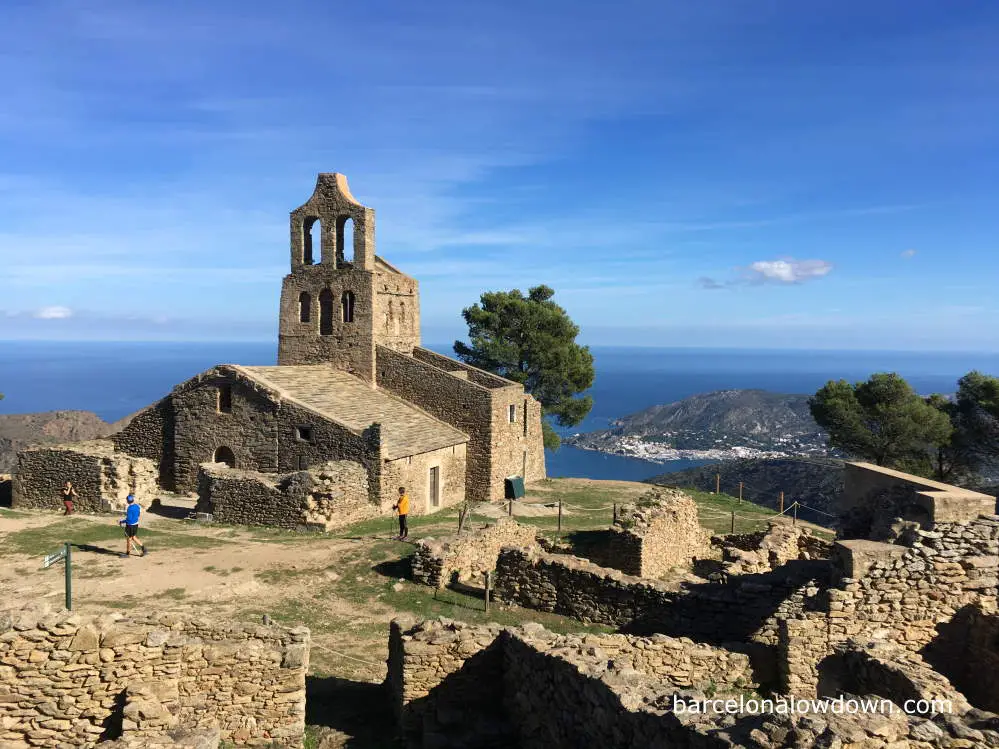
The village of Santa Creu de Rodes grew up alongside the monastery and housed the farmers, artisans and merchants who supplied the monks and pilgrims who lived in the monastery.
Today little remains of the village except for the Romanesque church of Santa Helena and some dry stone walls, which used to be the villagers’ homes.
Santa Creu de Rodes is a ten-minute walk from the monastery, and the path leading to it is fairly flat and has good views of Sant Pere de Rodes. There is a small car park next to the village.
El Creu Blanca and the dolmens of Vilajuïga

In addition to hiking up to Verdera Castle, it’s worth spending some time exploring the area surrounding the monastery. Later in this post, I describe the hike up to the monastery from El Port de la Selva, but there are several other footpaths in the area.
From Santa Creu de Rodes, you can follow the Cami de Sant Jaume southwards via Mas Ventos to Creu Blanca, where there is an ancient stone cross which marks what was once the perimeter of the land owned by the monastery.
Just before you come to the cross, there’s a marked route which visits seven megalithic dolmens dating back to the fourth century BC. Wikiloc trail here.
How to get to Sant Pere de Rodes and where to park
By Car
It takes approximately two hours to drive from Barcelona to the Sant Pere de Rodes Monastery from Barcelona. Take the AP7 motorway from Barcelona to Figueres, followed by the N260 towards Llança and, finally, the GIP-6041 via Villajuïga towards El Port de La Selva.
It only takes around two hours to visit the monastery, castle and Santa Pau de Rodes, so combining the visit with another nearby town makes sense. For example, you could stop off in Figueres and visit the Dalí Theatre-Museum on the way. Alternatively, if you have time, you could spend a few days touring the Costa Brava, visiting places such as Cadaqués, El port de la Selva, Roses, Pals and Peretallada, to mention just a few.
There are two free car parks next to the monastery complex. The larger of the two is just below the monastery. The second, smaller car park, is next to the ruined village of Santa Creu.
It takes approximately ten minutes to walk to the monastery from either of the two car parks. If you’re travelling with small children or seniors, I recommend you try to park in the smaller car park because the path to the monastery is less steep.
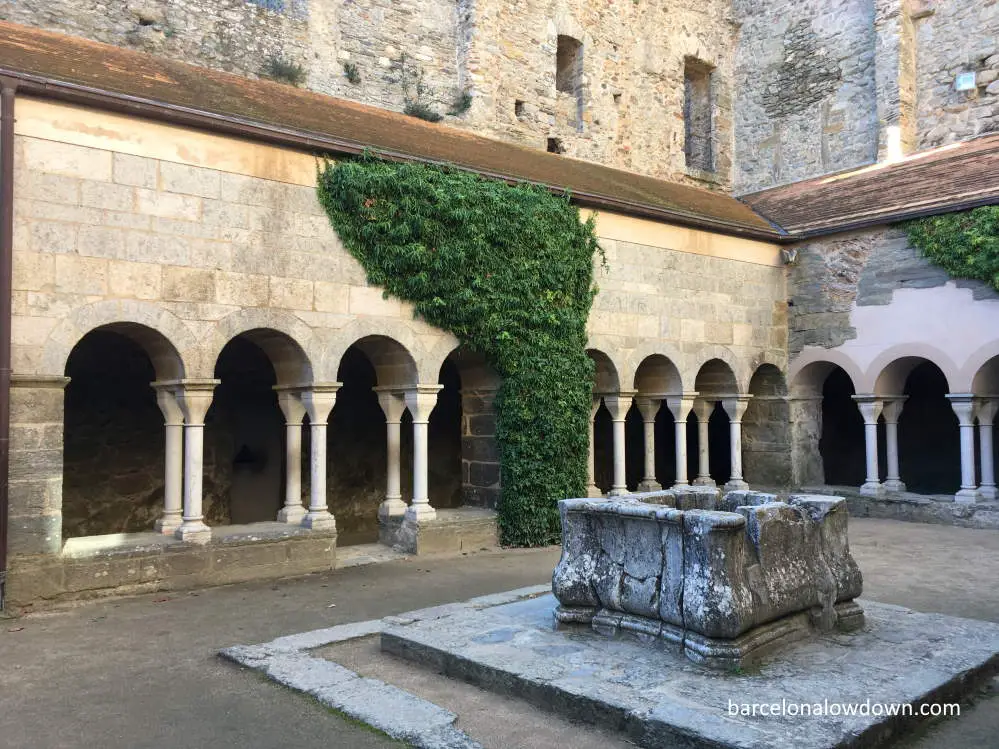
By public transport
Unfortunately, there isn’t a bus service to the Sant Pere de Rodes Monastery. If you don’t have your own vehicle, you can take public transport to one of the nearby towns and either walk or take a taxi to the monastery.
Don’t let this put you off. The walk takes about two hours and affords fantastic views of the Costa Brava and out to sea. In fact, I almost think of the walk up to the monastery as an integral part of the visit. Keep reading for more information.
The nearest towns with direct public transport connections from Barcelona are Llançà and Vilajuïga, both of which are on the R11 train line. There are ten direct trains from Barcelona each day, and the journey takes between two and two and a half hours depending on the type of train (Middle Distance or Regional trains). Timetables here.
A taxi from Llancà to the monastery would take about twenty-five minutes and cost approximately thirty euros for up to four passengers.
Another alternative would be to catch a high-speed train from Barcelona to Figueres and then take a bus from there to El Port de la Selva, where you could catch a taxi.
On foot
Several footpaths lead to the Monestir de Sant Pere de Rodes from the nearby towns and villages of El Port de La Selva, Llançà and Vilajuïga. There’s a map showing all the routes here.
I visited the monastery from El Port de la Selva and walked up following the route of the Cami de Sant Jaume. The walk takes approximately two hours along well-marked footpaths and green lanes.
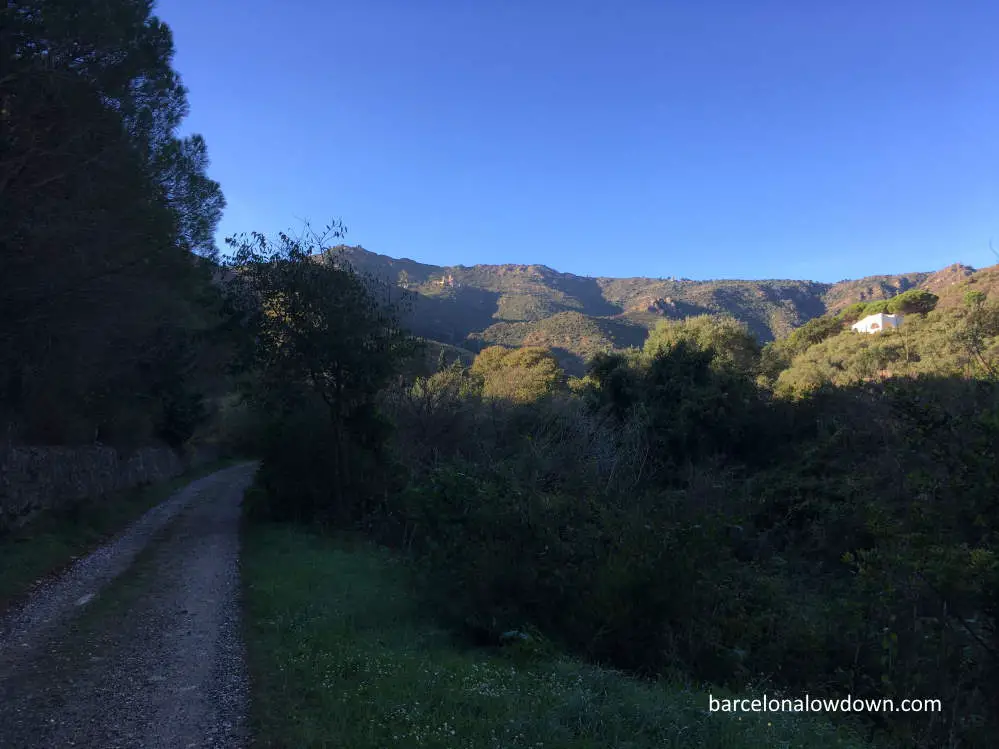
Although the route involves an altitude gain of approximately five hundred metres, I think most people should have no trouble walking it because there aren’t any really steep climbs.
To give you a better idea, I’ve included a couple of trail photos. The photo above shows the greenway between Camping Port de la Vall and La Vall de Santa Creu. Most of the trail is like this. The second photo (below) shows the steep and narrow section of the footpath just before you arrive at the monastery. This is the only steep section and lasts less than a kilometre.
The trail starts from beside the harbour in El Port de la Selva and continues along the promenade, west around the bay. At the end of the promenade, you’ll see painted yellow markers indicating that you are following The Camino. Red and white markers indicate the GR-92, which runs along the coast to Llançà. At this point, both marks indicate you are going the right way.
From here, you cross a bridge where there’s a large gravel car park on your right-hand side. Keep to the right as you cross the car park, then as you come to the beach, you’ll see Hostal l’Arola in front of you.

Walk along the beach to the right of the hotel, where you’ll come to a paved footpath which continues along the coast. Once again, you should see some yellow or red and white paint marks, confirming that you are on the right track.
Keep following the footpath until you come to Camping Port de la Vall, which is a medium-sized campsite with shady plots. Immediately after the campsite, take the track which follows around the site’s perimeter. At this point, you’ll be able to make out the monastery and Verdera Castle up ahead in the distance.
At the entrance to the campsite, turn left and walk along the GI-612 for fifty metres, where you turn right onto a greenway which leads to La Vall de Santa Creu. There’s a brown sign which says Riera de la Vall just before the turn-off.
From here, you simply follow the greenway and then the footpath to La Vall de Santa Creu. Every now and again, you’ll catch a glimpse of the monastery. There are also a few faded yellow Camino markers here and there.
An hour and a quarter after leaving El Port de la Selva, you’ll arrive at La Vall de Santa Creu. As you walk uphill through the hamlet, you’ll see a couple of signs indicating the route to Sant Pere de Rodes.
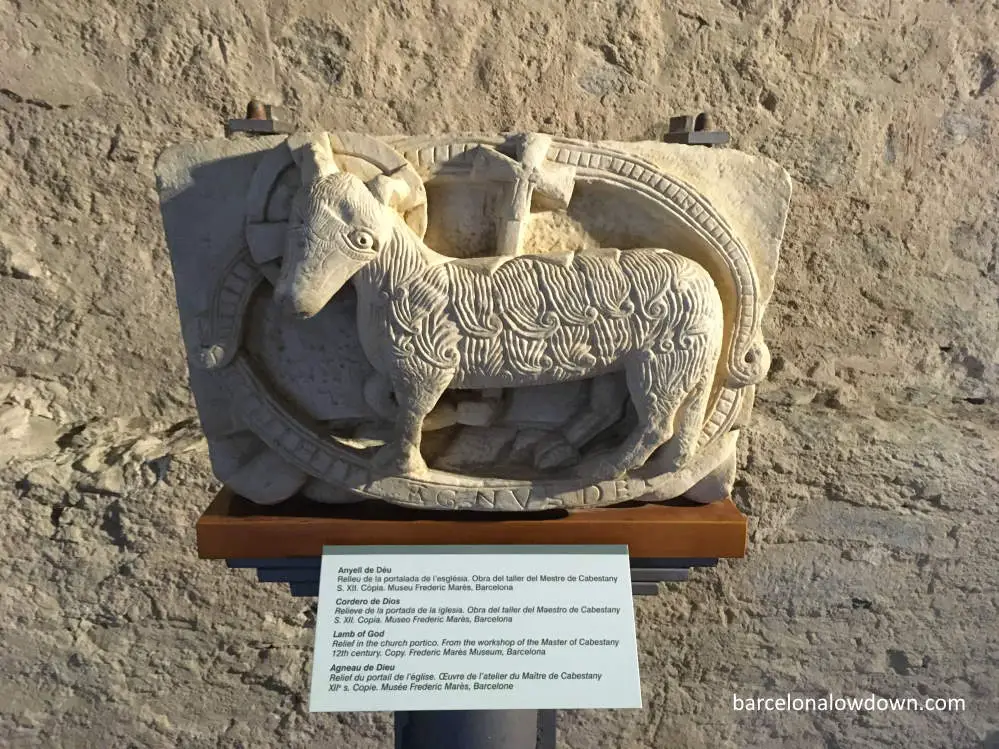
From here, the footpath skirts around a vineyard and there are distant views of El Port de la Selva and out to sea. At this point, the path becomes narrower and somewhat steeper.
Next, there’s a short section where you’re shaded by conifers and olive trees before, all of a sudden, the monastery appears right in front of you, silhouetted by the morning sunshine.
Where to stay when visiting Sant Pere de Rodes
There’s no accommodation at the monastery, so you have to visit on a day trip or from one of the nearby towns and villages.
We stayed at Hotel Agora, which is a good value hotel in El Port de la Selva, seven kilometres from the monastery.
Map of Sant Pere de Rodes
Zoom in to see the places mentioned in this post.
Camí del Monestir, s/n, El Port de la Selva
Carrer Llançà, 3, El Port de la Selva
Moll de la Timba, 2, 17489 El Port de la Selva
Cala Medussa, 17489, Port de la Selva
Camí del Monestir, s/n, 17489,
Camí del Monestir, s/n, El Portt de la Selva
Carrer de la Lloia, 1, El Port de la Selva

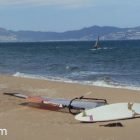
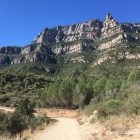
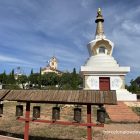
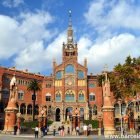
Thank you for the comprehensive info, will do our best to visit there.
Hi Mike,
Thanks for your comment. I definately recommend that you try and pay the monastery a visit if you’re in the area.